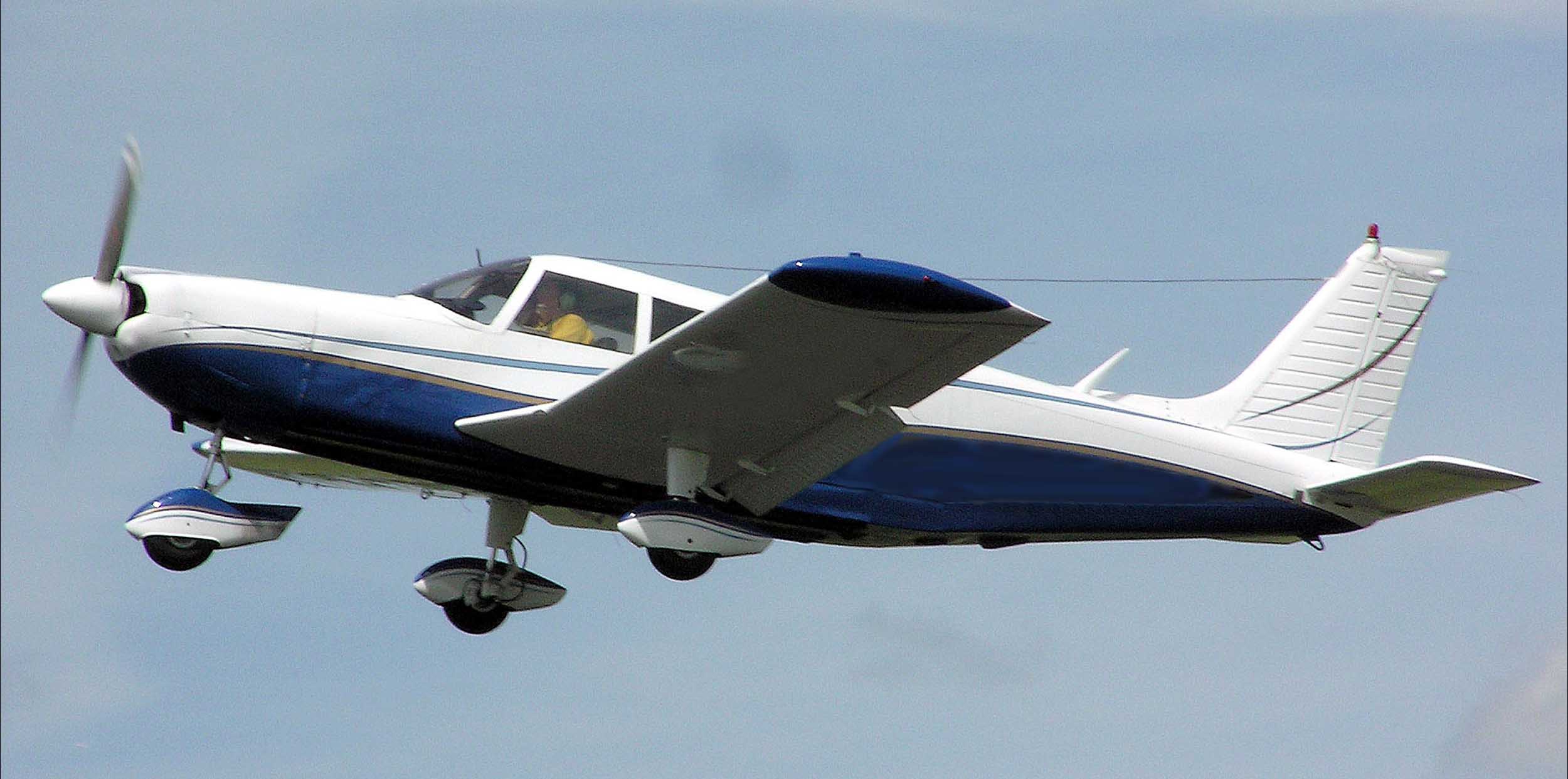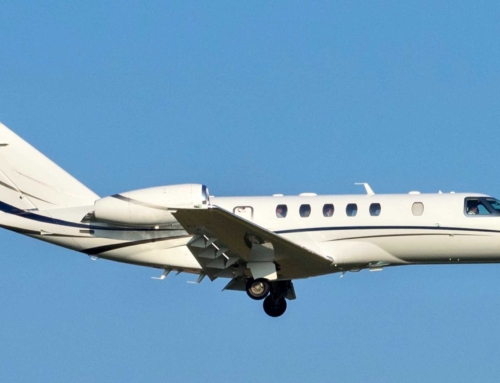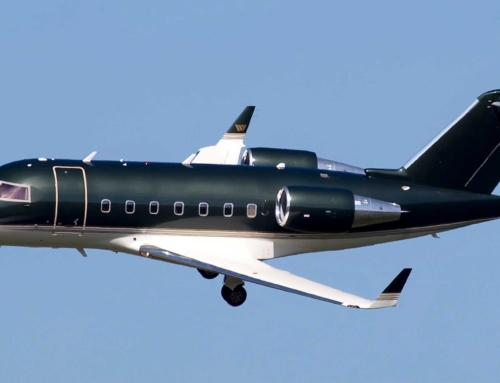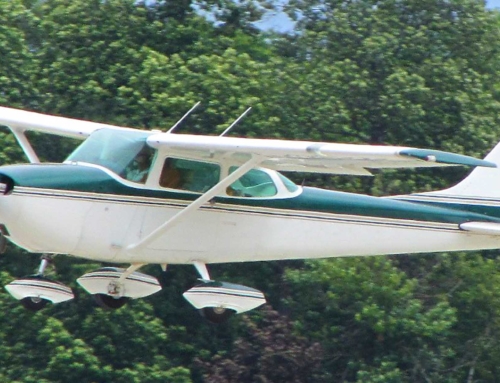Originally Taylor Brothers Aircraft in 1927, Piper was established by Clarence and Gordon Taylor. After a year, Gordon Taylor died – initializing a name change to Taylor Brothers Aircraft Corporation.
When the Great Depression hit, Taylor Brothers Aircraft Corporation went out of business. This caused Clarence to retreat from his aviation career. After its closure, investor William Piper stepped in to buy company assets for $761 in 1930 – equivalent to $12,335 in the 21st century.
Within the same year, Clarence designed a small, 2-seat aircraft to gauge public interest in smaller planes. Initially powered by a 20 horsepower engine, it switched to a 37 horsepower Continental Motors engine for faster performance. Because its original engine was called a “tiger kitten” engine, its nickname became the “Cub”. This aircraft was the first Piper aircraft to enter the market, and its design would eventually become legendary.
Piper purchased the rest of Clarence’s shares in the company in the winter of 1935. He changed its name to Piper Aircraft Corporation two years later, in 1937. Under Piper’s command, Piper Aircraft Corporation produced the J-3 Cub as the L-4 Grasshopper for military use during World War II.
Piper continued to make single-piston aircraft, using the names of legendary native tribes for many of them, including the Apache, Aztec, Cherokee, and Archer. Textron Aviation owns Piper, purchasing it 85 years after its founding.
-
Country of Origin: America
Piper Cherokee Six PA-32-300 Statistics
|
151 kts Maximum Speed |
360 nm Maximum Range |
7 Maximum Occupants |
1966-1979 Range Of Years Manufactured |
|
2,379 Total Aircraft Build |
1,133 Current Operational Aircraft |
1,611 lbs Useful Load |
$200,566 Average Sale Value |
|
180 Average Days On Market For Sale |
Visit VREF Online VREF Demand Rating |
Operational Resources
Operations Manual
Maintenance Document
Local Resources
Manufacturer
Insurance
Piper Cherokee Six PA-32-300 Details
Below include descriptions for a 1977 Piper Cherokee Six PA-32-300.
Interior
Piper’s marketing for this version of the Cherokee includes comparisons to Cessna’s Stationair, mentioning that it’s ideal for carrying heavy loads with a useful load of 1,578 lbs. Because of this, its cabin is 49×49 inches. This variation also features a rear-lighted, six-place gauge, large double doors for smooth cabin access, and room for an optional sixth passenger. Interior options typically include fabric club seating.
Exterior
The Cherokee Six PA-32-300 is known for having a fat wing, blunt cowling, and rugged, fixed gear. It also features hinged access doors, a three-pipe exhaust system, and tapered wing tips to reduce drag.
Avionics
- Bendix King KMA20 Audio Panel
- Garmin GNS 530 WAAS
- Garmin GNS 430 WAAS
- Stratus ADSB In/Out
- Stratus Dual Charging
- PS Engineering PM2000 Intercom
- Factory EGT
- Insight Engine Monitor
- G5 Attitude Indicator
- Century 360 HSI
- Piper AutoControl IIIB
Specifications
- Configuration: Single Engine, Piston, Fixed Gear
- Max Seats: 7
- Max Takeoff Weight: 3,400 lbs.
- Cruise (75%): 145 kts
- Range: 360 nm
- Take Off Run: 740 ft.
- Landing Roll: 630 ft.
- Wing Span: 32 ft. 10 in.
- Length: 27 ft. 9 in.
- Height: 7 ft. 11 in.
- Take Off (50 ft.): 1,500 ft.
Piper Cherokee Models
The following are variations of the Piper Archer, ranging from Piper’s Cherokee model to Pilot 100 and Pilot 100i models.
PA-28-140 Cherokee Cruiser
First certified on February 14, 1964, this aircraft has a gross weight of 2,150 lbs. Powered by Lycoming O-320-E2A or O-320-E3D engines, this two-seater, fixed landing gear landplane has a horsepower of 150. It has a gross weight of 1,950 lbs.
PA-28-150 Cherokee
This Cherokee has a gross weight of 2,150 lbs. and was first certified on June 2, 1961. It’s a four-seater, fixed landing gear landplane powered by a Lycoming O-320-A2B or O-320-E2A engine with 150 horsepower.
PA-28-151 Cherokee Warrior
The gross weight came to 2,325 lbs. and was first certified on August 9, 1973. This aircraft features a tapered wing change from the PA-28-150, and this variation is where the Warrior name is first introduced. This fixed-gear aircraft seats four and is powered by a Lycoming O-320-E3D engine with 150 horsepower.
PA-28-160 Cherokee
With a gross weight of 2,200 lbs., this Cherokee was first certified on October 31, 1960. This four-seater, fixed landing gear aircraft is equipped with a Lycoming O-320-B2B or O-320-D2A engine of 160 horsepower.
PA-28-161 Warrior II
This aircraft seats four and is powered by either a Lycoming O-320-D3G or an O-320-D2A engine of 160 horsepower. On November 2, 1976, it had a gross weight set at 2,325 lbs. during its initial certification, and it increased slightly by the time it received its second certification to 2,440 lbs. Changes from its predecessor include a tapered wing.
PA-28-161 Warrior III
This Warrior variation received its first certification on July 1, 1994. It is powered by a Lycoming O-320-D3G engine of 160 horsepower with a gross weight of 2,440 lbs.
PA-28-180 Cherokee
This aircraft has a gross weight of 2,400 lbs. and received its first certification on August 3, 1962. It seats four, is a fixed landing gear landplane, and is equipped with either a Lycoming O-360-A3A or O-360-A4A engine of 180 horsepower.
PA-28-180 Archer
The first Archer was certified on May 22, 1972. The PA-28-180 Cherokee changes feature a five-inch fuselage extension, wing span increase, more enormous horizontal tail, gross weight increase, and other minor changes. This PA version from Piper has a Lycoming O-360-A4A or O-360-A4M engine of 180 horsepower and a gross weight of 2,450 lbs.
PA-28-181 Archer II
The second Archer received its first certification on July 8, 1975. It features a refreshed tapered wing. Powered by a Lycoming O-360-A4M or O-360-A4A engine of 180 horsepower, this aircraft has a gross weight of 2,550 lbs.
PA-28-181 Archer III
The third and final Archer III was certified on August 30, 1994. It is a four-seater, fixed landing gear landplane powered by a Lycoming O-360-A4M engine of 180 horsepower with a gross weight of 2,550 lbs.
PA-28-201T Turbo Dakota
Piper’s turbocharged Dakota has a gross weight of 2,900 lbs. and received its first certification on December 14, 1978. It’s equipped with a Continental TSIO-360-FB engine of 200 horsepower.
PA-28-235 Cherokee Pathfinder
The Pathfinder has a gross weight of 2,900 lbs. and received its first certification on July 15, 1963. It is powered by a Lycoming O-540-B2B5, O-540-B1B5, or O-540-B4B5 engine of 235 horsepower.
PA-28-235 Cherokee Pathfinder
Piper’s updated Pathfinder was first certified on June 9, 1972. It features a five-inch fuselage extension, wing span increase, larger horizontal tail, and gross weight increase. It is a fixed landing gear landplane equipped with a Lycoming O-540-B4B5 engine of 235 horsepower at a gross weight of 3,000 lbs.
PA-28-236 Dakota
The Dakota was first certified on June 1, 1978, with a refreshed tapered wing. It has a Lycoming O-540-J3A5D engine of 235 horsepower and a gross weight of 3,000 lbs.
PA-28S-160 Cherokee
First certified on February 25, 1963, this Cherokee is a four-seater, fixed landing gear seaplane with a Lycoming O-320-D2A engine of 160 horsepower. It has a gross weight of 2,140 lbs.
PA-28S-180 Cherokee
This Cherokee seaplane variation is powered by a Lycoming O-360-A3A or O-360-A4A engine of 180 horsepower and has a gross weight of 2,222 lbs. It received its first certification on May 10, 1963.
PA-28R-180 Arrow
Entering the Arrow series of the line, this four-place, retractable landing gear landplane comes with a Lycoming IO-360-B1E engine of 180 horsepower and a gross weight of 2,500 lbs. It was first certified on June 8, 1967.
PA-28R-200 Arrow
Just two years after the initial Arrow, this version received its certification on January 16, 1969. It’s a four-place, retractable landing gear landplane with a Lycoming IO-360-C1C engine of 200 horsepower and a gross weight of 2,600 lbs.
PA-28R-200 Arrow II
Changes from the 1969 Arrow include a five-inch fuselage extension, a wing span increase, and a larger horizontal tail. Arrow II received its certification on December 2, 1971. It’s a four-seat, retractable landing gear landplane with a Lycoming IO-360-C1C or C1C6 engine of 200 horsepower. Its gross weight increased slightly to 2,650 lbs.
PA-28R-201 Arrow III
This aircraft was first certified on November 2, 1976. The third Arrow is also a four-place, retractable landing gear landplane with a different Lycoming IO-360-C1C6 engine of 200 horsepower and a gross weight of 2,750 lbs.
PA-28R-201T Turbo Arrow III
The turbo variation of the Arrow series increased its gross weight to 2,900 lbs. It received its certification on November 2, 1976, and its non-turbo version. It seats four, is a retractable landing gear landplane, and comes equipped with a turbocharged Continental TSIO-360-F or TSIO-360-FB engine of 200 horsepower.
PA-28RT-201 Arrow IV
This Arrow seats four and was first certified on November 13, 1978, with a T-tail design. It has a retractable landing gear with a Lycoming IO-360-C1C6 engine of 200 horsepower and a gross weight of 2,750 lbs.
PA-28RT-201T Turbo Arrow IV
The Arrow IV has retractable landing gear, a T-tail, a gross weight of 2,900 lbs., and was first certified on November 13, 1978. It is powered by a Continental TSIO-360-FB engine of 200 horsepower and seats four.
PA-28-161 Cadet
The only existing Cadet is a two-place, fixed landing gear landplane with either a Lycoming O-320-D2A or -D3G engine of 160 horsepower. The Cadet replaced the PA-38 Tomahawk trainer in the late 1980s. However, this aircraft features the older Cherokee’s 2-side window fuselage with the later tapered wing. Its gross weight decreased from its predecessor to 2,325 lbs.
Archer DX
The Archer DX was introduced at AERO Friedrichshafen in April 2014. Its turbocharged version balances at full power up to over 10,000 ft. and climbs at 700 to 500 ft./min. At 86 knots. Cruise fuel flow is 4.2 to 6.3 US gal at 50-75% power and a 100 to 117 knots IAS. You must replace the engine every 2,100 hours.
The Archer DX features a compression-ignition engine that is simpler to operate, avoiding starting difficulties, carburetor icing, or propeller and mixture controls, and the liquid cooling does not suffer shock cooling in a rapid descent. This variation reverts to four seats with fixed landing gear and a turbocharged Continental CD-155 diesel engine with 155 horsepower.
Pilot 100 and Pilot 100i
The Pilot 100 and Pilot 100i were to be seen as low-cost VFR and IFR trainers, respectively, for the flight training market in 2019. The VFR features a fixed landing gear and 180 horsepower Continental Prime IO-370-D3A engine. Avionics include a Garmin G3X with Touch Certification.
The IFR variation contains a GFC500 autopilot system, a 2-side-window fuselage with the later tapered wing, no baggage door, no air conditioning, and no instruments on the right-hand panel. The 100 offers a two-place seating standard function rear third seat with push-to-talk and Bluetooth functions, which is standard on the i100 and optional on the 100. These new versions were type certified in December 2020 in the United States and in August 2021 in Europe.
Top Piper Cherokee Questions
The following are answers to FAQs about the Piper Cherokee.
How Much Is A New Piper Cherokee?
This answer depends on the aircraft you are interested in. Piper’s latest available Cherokee model is the 2022 Archer LX. It’s a single-engine 4-seater aircraft that takes the well-known fuselage of the Cherokee, giving it a modern luxurious twist. It has a 180-horsepower Lycoming engine and advanced Garmin G1000 NXi avionics. This variation has a base price of $449,803.
However, if interested in new and upcoming models, Piper’s 2023 Piper Archer DLX is available for delivery in Q2 2023. This model has a Continental CD-155 diesel engine and Garmin G1000 NXi Suite avionics. The base price for this model is $554,000.
Is Piper Or Cessna Better?
Finding the right plane means purchasing and test-flying an aircraft that matches the pilot’s or owner’s needs. Both Cessna and Piper are top-rated aircraft manufacturers and have their fundamental pros and cons. When it comes to single-engine aircraft, Piper’s Archer and Cessna’s 172 are compared regularly. Both are 4-seater aircraft with an all-metal construction. The main difference between the two is that the Archer is more of a low-wing aircraft, as its wings sit below cockpit level. The 172 has a higher wing design. There are also two doors on the 172, while the Archer has one door. Piper’s low-wing design can make ground visibility in the air tougher to see while flying level but offers good visibility in turns. Cessna had better visibility but is a little pricer than its Piper counterpart.
How Many Piper Cherokees Are There?
There are 24 total variants of the Piper Cherokee. However, the only one currently in production is the Piper Archer.
What Is The Range Of A Piper Cherokee?
Depending on the interested model, a 1979 Cherokee has a max range of 905 nm. But a 2023 Piper Archer has a max range of 848 nm.
View Piper Cherokee Data At VREF Online
Find everything you need to know about the Piper Cherokee when you subscribe to VREF Online.







